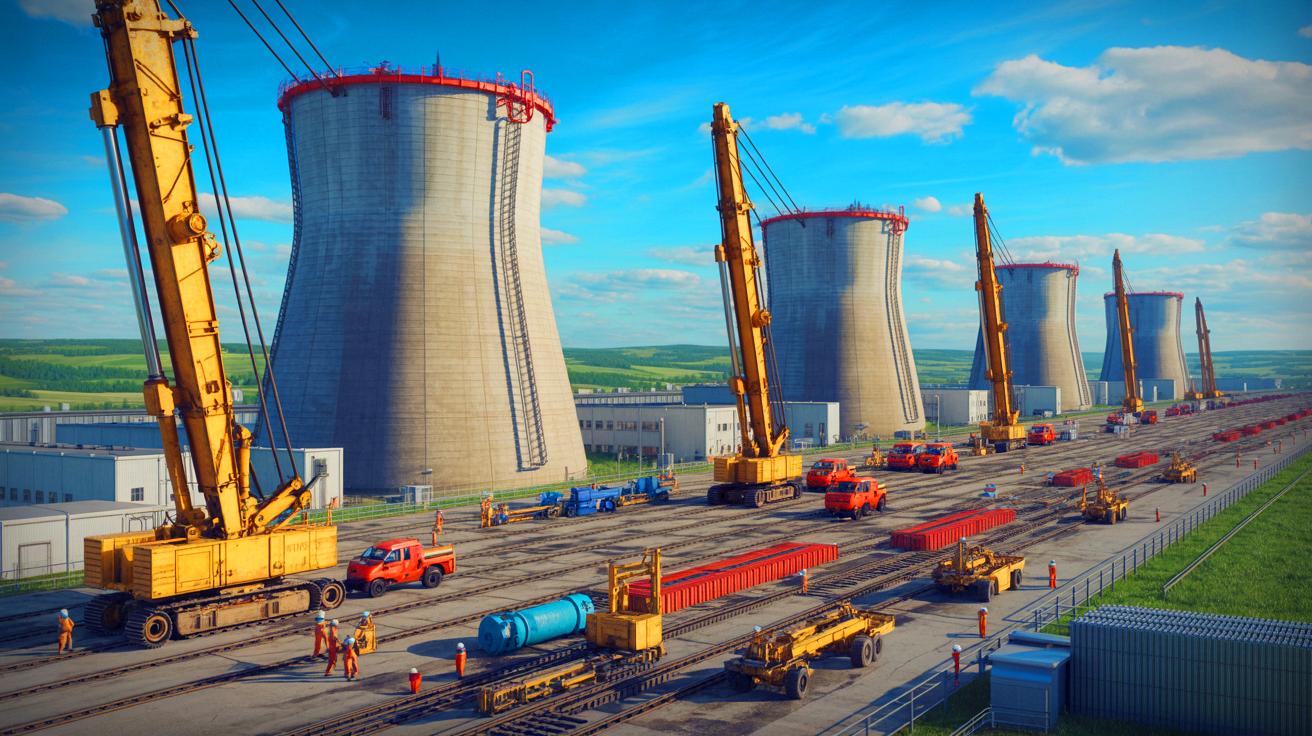IN A NUTSHELL
🔋 Slovakia has completed the decommissioning of two Soviet-era Bohunice V1 reactors, marking a major milestone in its energy sector.
💼 The project involved the removal of nearly 7,400 tons of radioactive waste, with international cooperation playing a crucial role.
🌍 International funding and advanced technology ensured the safe and timely dismantling of the reactors, setting a benchmark for future projects.
🚀 Slovakia’s successful decommissioning effort paves the way for similar projects across Central and Eastern Europe, enhancing regional nuclear safety.
The recent decommissioning of two Soviet-era Bohunice V1 reactors marks a significant milestone in Slovakia’s energy landscape. With the complete removal of nearly 7,400 tons of radioactive waste, the site is now ready for redevelopment. This monumental effort was spearheaded by a consortium led by Westinghouse and supported by various international entities, highlighting the importance of global cooperation in nuclear safety. As Slovakia looks towards a future with a greener energy mix, the lessons learned from this decommissioning process are expected to shape similar efforts across Europe.
The Long Road from Operation to Shutdown
The Bohunice V1 reactors, of the VVER-440/V-230 design, were the first Soviet-designed nuclear power reactors constructed outside the USSR. They were assembled with the expertise of Czechoslovakia’s Škoda Works and became operational in the late 1970s. These reactors became the cornerstone of Slovakia’s nuclear energy production, especially after a 1977 incident led to the shutdown of the older Bohunice A1 reactor. Between 1991 and 2000, a substantial safety upgrade costing $300 million brought these reactors up to Western safety standards, according to the World Nuclear Association.
Despite these upgrades, Slovakia agreed to close the reactors as a condition of joining the European Union. Unit 1 was shut down in 2006, followed by Unit 2 in 2008. This decision, while necessary, temporarily made Slovakia a net importer of electricity. The shutdown also sparked domestic debate, especially during the 2009 Russia-Ukraine gas crisis, when there were calls to restart Unit 1, an idea that was ultimately not pursued.
International Funding and Technical Effort
The decommissioning process began in earnest in 2012, with the Bohunice International Decommissioning Support Fund (BIDSF) receiving significant financial backing from international donors. By the end of 2020, the fund had amassed $745 million from various governments and the European Union. This robust financial and technical support facilitated the safe and timely dismantling of the reactors.
Advanced robotic decontamination systems, alongside innovative cutting techniques, were employed to manage the complex task of disassembling the radioactive components. Steven White, Head of the BIDSF at the EBRD, emphasized the project’s success as a testament to international cooperation, demonstrating a strong commitment to nuclear safety and environmental protection. Massimo Garribba from the European Commission echoed these sentiments, noting the establishment of a benchmark for future decommissioning projects.
Slovakia’s Nuclear Landscape After V1
With the decommissioning of the Bohunice V1 reactors, Slovakia is poised to redefine its nuclear energy landscape. Currently, the country operates five nuclear reactors, supplying approximately half of its electricity needs. A sixth reactor is under construction. The remaining units at Bohunice and those at Mochovce continue to play a crucial role in Slovakia’s energy mix. Mochovce 3, which began commercial operations in 2023, underscores Slovakia’s ongoing commitment to nuclear energy.
The successful dismantling of the Bohunice V1 reactors sets a precedent for similar projects in Central and Eastern Europe, where several VVER-440 units are nearing the end of their operational lives. Slovakia’s experience demonstrates that even older, first-generation Soviet reactors can be decommissioned safely and effectively, paving the way for a more sustainable energy future.
The decommissioning of the Bohunice V1 reactors represents a significant achievement in Slovakia’s energy history. It underscores the critical role of international collaboration and technological innovation in managing complex nuclear projects. As Slovakia moves towards a future with an enhanced and diversified energy mix, the lessons learned from this decommissioning process will likely influence similar projects throughout the region. How will Slovakia leverage this experience to further enhance its energy security and environmental sustainability in the coming years?
This article is based on verified sources and supported by editorial technologies.
Did you like it? 4.5/5 (23)
